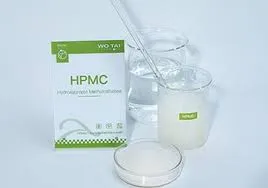
Nov . 29, 2024 16:08 Back to list
Safety Data Sheet for Hydroxyethyl Cellulose Overview and Key Information
Understanding Hydroxyethyl Cellulose (HEC) Safety Data Sheet (SDS) Overview
Hydroxyethyl cellulose (HEC) is a water-soluble polymer derived from cellulose, a natural polysaccharide. Its unique properties make it a valuable ingredient in various industries, including pharmaceuticals, cosmetics, and construction. One essential aspect of working with HEC and other chemicals is understanding the Safety Data Sheet (SDS)—a comprehensive document that conveys information about the substance’s properties, handling, and potential hazards.
What is Hydroxyethyl Cellulose?
Hydroxyethyl cellulose is characterized by its thickening, gelling, and binding capabilities. The chemical structure of HEC consists of hydroxyethyl groups that are etherified to the cellulose backbone, which enhances its solubility in water and improves its functional properties. HEC is widely used in applications such as
- Cosmetics and Personal Care Products HEC acts as a thickener and stabilizer in lotions, creams, and shampoos, providing viscosity and improving texture. - Pharmaceutical Formulations In this industry, HEC serves as a binder in tablets and a stabilizer in liquid formulations, delivering improved solubility and controlled release of active ingredients. - Construction Materials HEC is used in dry-mix mortars, adhesives, and plasters to enhance workability and water retention.
Importance of the Safety Data Sheet (SDS)
The Safety Data Sheet (SDS) is critical for ensuring safe handling, transportation, and storage of hazardous materials, including HEC. The SDS follows a standardized format, usually comprising 16 sections, which provide comprehensive safety information.
Key Sections of the SDS
1. Identification This section includes the product name, recommended use, and contact information of the manufacturer or supplier.
2. Hazard Identification Here, users will find information on potential hazards relating to HEC, including physical, health, and environmental risks. It often indicates whether the substance is harmful if inhaled, ingested, or comes into contact with skin.
3. Composition/Information on Ingredients This section outlines the chemical identity of HEC and any additives or impurities present.
4. First-Aid Measures In case of exposure, this section provides first aid instructions, advising on how to respond to various scenarios, including skin contact, inhalation, or ingestion.
5. Fire-Fighting Measures This segment includes suitable extinguishing media, specific hazards arising from HEC, and advice for firefighters to help manage fire-related incidents effectively.
hydroxyethyl cellulose sds

6. Accidental Release Measures Guidance is provided for responding to spills or leaks, including containment strategies and protective requirements for personnel.
7. Handling and Storage This section emphasizes best practices for safe handling and storage of HEC, including incompatibilities with other substances.
8. Exposure Controls/Personal Protection Recommendations for exposure limits, engineering controls, and personal protective equipment (PPE) are detailed to minimize risks.
9. Physical and Chemical Properties Here, the physical characteristics of HEC, such as appearance, odor, pH, and solubility, are documented.
10. Stability and Reactivity This section assesses the stability of HEC under various conditions and outlines hazardous reactions that may occur if improperly handled.
11. Toxicological Information Data are provided on the potential health effects of exposure to HEC, including symptoms and effects associated with inhalation, ingestion, and skin contact.
12. Ecological Information Environmental impact information is presented, detailing the effects HEC may have on aquatic life and the surrounding ecosystem.
13. Disposal Considerations This part provides guidance on proper disposal practices to avoid environmental contamination.
14. Transport Information This section outlines regulations for transporting HEC, including classification for shipping and labeling requirements.
15. Regulatory Information Relevant safety regulations, international agreements, and standards that apply to HEC are summarized here.
16. Other Information This final section may include references to literature, revisions history, and any other relevant data.
Conclusion
Hydroxyethyl cellulose is an essential compound utilized across numerous sectors. The SDS plays a critical role in ensuring its safe use. By understanding the information presented in the SDS, workers and consumers can mitigate risks associated with handling HEC, making it a safer experience for all stakeholders involved. Regular education and training on interpreting and implementing the guidelines of the SDS are crucial for maintaining safety in various applications of hydroxyethyl cellulose.
-
What is HPMC?
NewsJun.06,2025
-
Understanding Redispersible Powder: The Future of Construction Materials
NewsJun.06,2025
-
Understanding RDP Powder: The Ultimate Solution for Your Construction Needs
NewsJun.06,2025
-
Pure HPMC: The Ideal Solution for Modern Construction and Building Materials
NewsJun.06,2025
-
Methyl Hydroxyethyl Cellulose: A Versatile Chemical Compound
NewsJun.06,2025
-
Hydroxyethyl Cellulose Power: The Essential Chemical for Various Industries
NewsJun.06,2025







